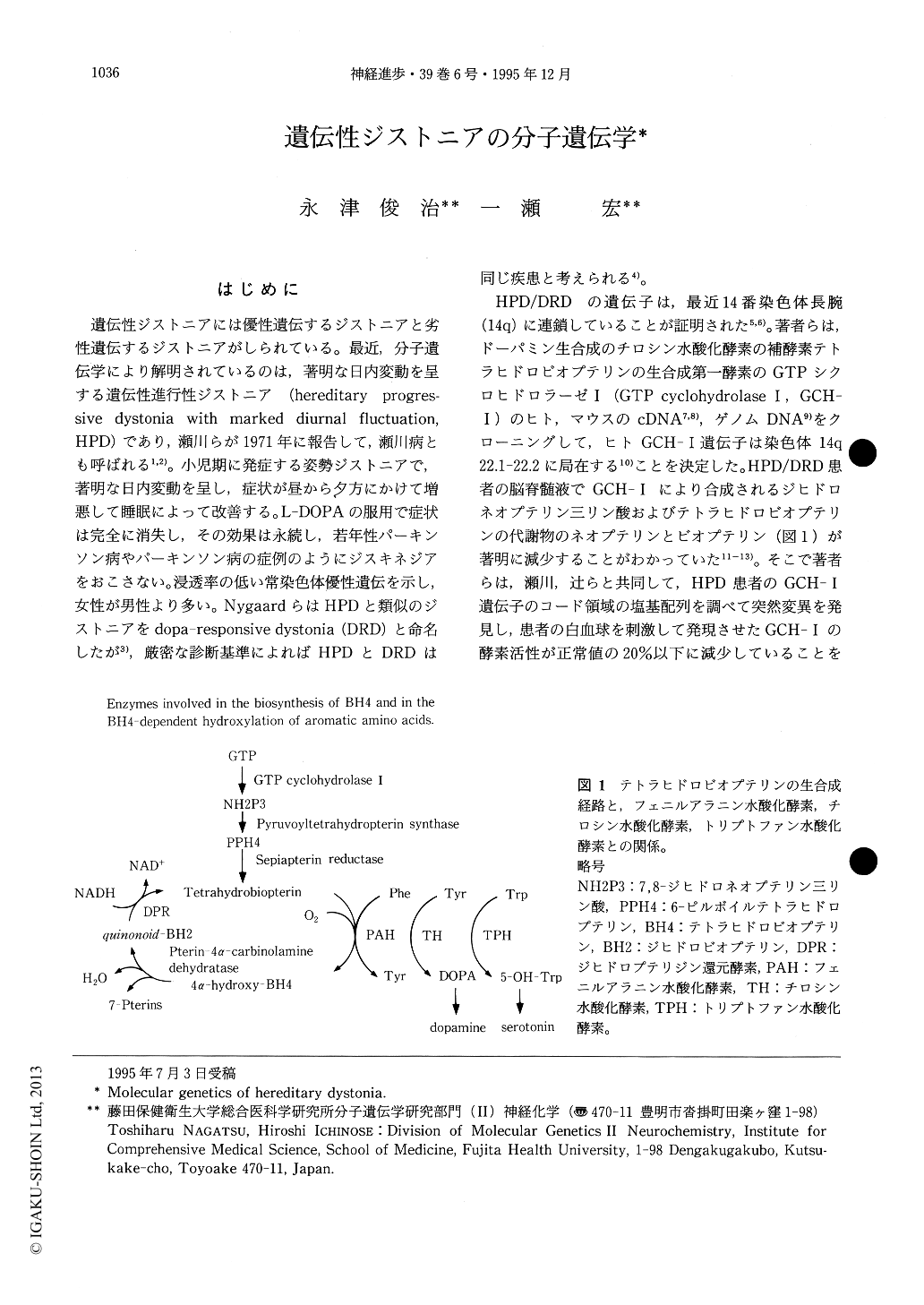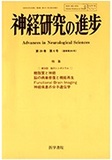Japanese
English
- 有料閲覧
- Abstract 文献概要
- 1ページ目 Look Inside
はじめに
遺伝性ジストニアには優性遺伝するジストニアと劣性遺伝するジストニアがしられている。最近,分子遺伝学により解明されているのは,著明な日内変動を呈する遺伝性進行性ジストニア(hereditary progressive dystonia with marked diurnal fluctuation,HPD)であり,瀬川らが1971年に報告して,瀬川病とも呼ばれる1,2)。小児期に発症する姿勢ジストニアで,著明な日内変動を呈し,症状が昼から夕方にかけて増悪して睡眠によって改善する。L-DOPAの服用で症状は完全に消失し,その効果は永続し,若年性パーキンソン病やパーキンソン病の症例のようにジスキネジアをおこさない。浸透率の低い常染色体優性遺伝を示し,女性が男性より多い。NygaardらはHPDと類似のジストニアをdopa-responsive dystonia(DRD)と命名したが3),厳密な診断基準によればHPDとDRDは同じ疾患と考えられる4)。
Dystonia, juvenile parkinsonism (JP) and Parkinson's disease (PD) are the movement disorders accompanied by the dopamine deficiency in the nigrostriatal dopamine neurons projecting to the basal ganglia, and are responsive to L-DOPA treatment with varying degrees of efficacy.
Dopamine is synthesized from L-tyrosine in the dopaminergic neurons in the two steps: L-tyrosine →L-DOPA→dopamine.

Copyright © 1995, Igaku-Shoin Ltd. All rights reserved.


